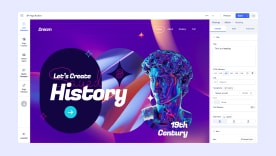- TemplatesTemplates
- Page BuilderPage Builder
- OverviewOverview
- FeaturesFeatures
- Dynamic ContentDynamic Content
- Popup BuilderPopup Builder
- InteractionsInteractions
- Layout BundlesLayout Bundles
- Pre-made BlocksPre-made Blocks
- DocumentationDocumentation
- EasyStoreEasyStore
- ResourcesResources
- DocumentationDocumentation
- ForumsForums
- Live ChatLive Chat
- Ask a QuestionAsk a QuestionGet fast & extensive assistance from our expert support engineers. Ask a question on our Forums, and we will get back to you.
- BlogBlog
- PricingPricing
Accessibility of Websites
The European Union (EU) has regulations and directives aimed at promoting accessibility, especially in the digital domain. The key legislation in this regard is the Web Accessibility Directive (Directive (EU) 2016/2102), which came into force on September 23, 2018. This directive was implemented in Germany at the federal level through adjustments to the Disability Equality Act (BGG) and the enactment of the Barrier-Free Information Technology Ordinance (BITV). In other EU countries, the names of the acts were different, but the rules and requirements were the same. Legislation requires websites to be accessible to disabled users. A compliant website not only ensures a safe and effective experience for all users but also protects site owners from lawsuits. Accessibility is the practice of making your websites usable by as many people as possible.
Accessibility law in the EU and other countries
Here are some key points related to accessibility law in the European Union:
-
Web Accessibility Directive (Directive (EU) 2016/2102):
- The directive focuses on the accessibility of public sector websites and mobile applications.
- Member States are required to ensure that websites and mobile applications of public sector bodies are accessible to all users, including people with disabilities.
-
Scope:
- The directive applies to websites and mobile applications of public sector bodies at national, regional, and local levels.
-
Accessibility Requirements:
- Public sector websites and mobile applications must comply with the Web Content Accessibility Guidelines (WCAG) 2.1, with at least Level AA criteria.
-
Monitoring and Reporting:
- Member States are required to establish mechanisms for monitoring and enforcing the directive.
- Public sector bodies are typically required to publish an accessibility statement, detailing the level of compliance and providing contact information for users to report accessibility issues.
-
Exemptions:
- Certain content and functionalities may be exempted if they are not subject to the directive due to the disproportionate burden or technical impossibility of making them accessible.
Your country may also have specific legislation governing the need for websites serving their population to be accessible, for example:
- EN 301 549 in the EU,
- Section 508 of the Rehabilitation Act in the US,
- Federal Ordinance on Barrier-Free Information Technology in Germany,
- Ustawa o dostepnosci cyfrowej in Poland,
- The Accessibility Regulations 2018 in the UK,
- Accessibilita in Italy, the Disability Discrimination Act in Australia.
The laws of these countries imply that a website and mobile app is digitally accessible if it meet specific requirements.
Changes in German Law
Public bodies are obliged to make their websites accessible. Private Internet websites so far have not been subject to such requirements, but this will change in 2025. This will change in Germany with the Accessibility Strengthening Act (Barrierefreiheitsstärkungsgesetz, BFSG). The EU focused on economic actors and issued Directive (EU) 2019/882 on accessibility requirements for products and services in April 2019. To implement this directive, the Bundestag passed the BFSG in May 2021. According to this, from 28 June 2025 onwards, numerous commercial enterprises operating in Germany must also design their B2C e-commerce websites to be barrier-free. The BFSG has a broad scope of application, covering IT products and services aimed at consumers, and placed on the market on 28 June 2025 or later. The products covered include computer hardware, operating systems, self-service terminals, terminal equipment for the use of telecommunication services and media services as well as e-book readers (Section 1(2) BFSG). The services covered include telecommunications services, websites and apps of national transport providers, banking services, e-books and, last but not least, all "services in electronic commerce" (Section 1(3) BFSG). Thus, as of the cut-off date – 28 June 2025 – all B2C providers who sell their goods or services via websites or apps must comply with the requirements of the BFSG. // source: B.Freund
Read guide (PDF, 186 pages): Accessibility requirements for ICT products and services
Concerning the accessibility requirements for websites, EN 301 549 refers to the Web Content Accessibility Guidelines (WCAG) of the World Wide Web Consortium (W3C). They set out criteria for considering websites perceivable, operable, understandable, and robust. Three levels are distinguished: A, AA, and AAA. The European standard adopts the medium requirement level (AA). B2C websites have to meet this level to comply with German law from 28 June 2025.
Principles of Accessibility
The guidelines and Success Criteria are organized around the following four principles, laying the foundation for anyone to access and use Web content. Anyone who wants to use the Web must have content that is:
-
Perceivable - Information and user interface components must be presentable to users in ways they can perceive. This means that users must be able to perceive the information being presented (it can't be invisible to all of their senses)
-
Operable - User interface components and navigation must be operable. This means that a user can successfully use controls, buttons, navigation, and other interactive elements. For many users, this means using assistive technology like voice recognition, keyboards, screen readers etc.
-
Understandable - Information and the operation of the user interface must be understandable. This means that users must be able to understand the information as well as the operation of the user interface (the content or operation cannot be beyond their understanding)
-
Robust - Content must be robust enough that it can be interpreted reliably by a wide variety of user agents, including assistive technologies. This means that users must be able to access the content as technologies advance (as technologies and user agents evolve, the content should remain accessible as much as possible)
If any of these are not true, users with disabilities will (may) not be able to use the Web.
Extra informations
- In SP Page Builder updates we added some changes to improve accessibility, also new changes are coming soon. For example, every Addon that uses Images has an ALT field, and many addons (also for buttons) use an ARIA-LABEL field.
- In Joomla 4 and Joomla 5.x webmasters have a built-in Accessibility toolbar that can be used and displayed on the front end, which helps a lot. But of course, you can use an alternative accessibility plugin or widget code instead.
- Remember that your site must not only get a good score in the Online Accessibility Testing Tool but must pass a positive audit from a real person as well.
- Your site needs an extra page (document) called "Accessibility Statement". This is a legal requirement.
- Site Accessibility is not a single action, it must be checked regularly if you manage that site.
- For Basic Accessibility Validations we recommend using testers, for example, WAVE (Browser Addon) - which allows you to evaluate web content for accessibility issues.

